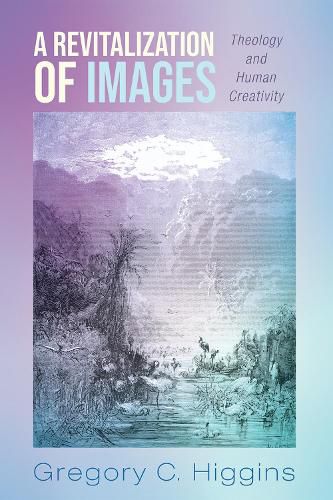Readings Newsletter
Become a Readings Member to make your shopping experience even easier.
Sign in or sign up for free!
You’re not far away from qualifying for FREE standard shipping within Australia
You’ve qualified for FREE standard shipping within Australia
The cart is loading…






This title is printed to order. This book may have been self-published. If so, we cannot guarantee the quality of the content. In the main most books will have gone through the editing process however some may not. We therefore suggest that you be aware of this before ordering this book. If in doubt check either the author or publisher’s details as we are unable to accept any returns unless they are faulty. Please contact us if you have any questions.
The philosopher, theologian, and biblical scholar Austin Farrer (1904-1968) highlighted in his various writings the central role that images play in the interpretation of biblical writings, the construction of theological arguments, and the descriptions of the Christian spiritual life. Theologians down through the centuries have sought to revitalize the central biblical images as they addressed the pressing theological, moral, and spiritual questions of their day. A Revitalization of Images offers students the opportunity to participate in this ongoing creative engagement with ten dominant biblical images that continue to shape the church’s beliefs and practices, as well as each Christian’s own spiritual journey.
Sound theology is rooted in Scripture, conversant with past thinkers, and engaged in the present life of the church. This dynamic directly informs Revitalization. In each chapter we begin with a biblical image that has figured prominently in the Christian theological tradition. Next we examine two prominent voices from the Christian tradition who have drawn upon the image when crafting a compelling vision of the Christian life. We then turn our attention to a contemporary thinker who has incorporated or critiqued the image in his or her own theological work. This discussion is set within the current spectrum of theological positions including orthodox, liberal, postliberal, and postmodern perspectives.
$9.00 standard shipping within Australia
FREE standard shipping within Australia for orders over $100.00
Express & International shipping calculated at checkout
This title is printed to order. This book may have been self-published. If so, we cannot guarantee the quality of the content. In the main most books will have gone through the editing process however some may not. We therefore suggest that you be aware of this before ordering this book. If in doubt check either the author or publisher’s details as we are unable to accept any returns unless they are faulty. Please contact us if you have any questions.
The philosopher, theologian, and biblical scholar Austin Farrer (1904-1968) highlighted in his various writings the central role that images play in the interpretation of biblical writings, the construction of theological arguments, and the descriptions of the Christian spiritual life. Theologians down through the centuries have sought to revitalize the central biblical images as they addressed the pressing theological, moral, and spiritual questions of their day. A Revitalization of Images offers students the opportunity to participate in this ongoing creative engagement with ten dominant biblical images that continue to shape the church’s beliefs and practices, as well as each Christian’s own spiritual journey.
Sound theology is rooted in Scripture, conversant with past thinkers, and engaged in the present life of the church. This dynamic directly informs Revitalization. In each chapter we begin with a biblical image that has figured prominently in the Christian theological tradition. Next we examine two prominent voices from the Christian tradition who have drawn upon the image when crafting a compelling vision of the Christian life. We then turn our attention to a contemporary thinker who has incorporated or critiqued the image in his or her own theological work. This discussion is set within the current spectrum of theological positions including orthodox, liberal, postliberal, and postmodern perspectives.